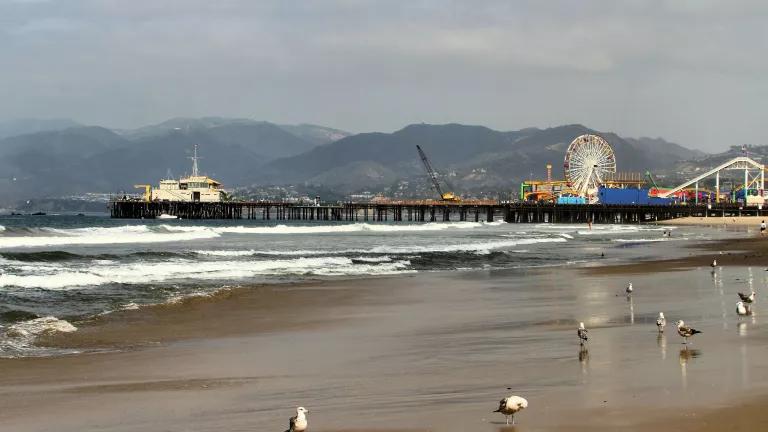
Los Angeles loves its beaches. In the summer, you practically have to elbow your way through the mob of tourists, surfers, and families to get to the water. But now, with the days getting cooler and shorter, the crowd of visitors is thinning. Unfortunately, this means I’ll need to accept that summer really is over. At the same time, I feel relief that those summertime beachgoers are no longer exposing themselves to the pollutants that have drained out to sea.
When rain falls onto streets, parking lots, and sidewalks, it runs along those impervious surfaces and picks up trash, metals, pesticides, pet wastes, and other contaminants. This highly polluted runoff is then discharged, untreated, into nearby beaches and rivers.
It’s a big problem. Stormwater runoff is the leading cause of surface water pollution—not just in Los Angeles County but in all of Southern California. It causes thousands of beach closures and swimming advisories a year and can lead to serious health problems.
That’s why this Friday, September 30, NRDC will argue in Los Angeles Superior Court that the illegal provisions within the LA County municipal stormwater permit that have rendered it ineffective should be fixed.
The drains and sewers that transport stormwater are operated by cities. To keep pollution under control, municipalities are required by the federal Clean Water Act to have discharge permits. At issue this Friday is the permit, adopted in 2012, that established requirements for the Los Angeles County and 84 cities within its boundaries. It prohibits cities from discharging runoff that “cause[s] or contribute[s]” to violations of water quality standards in local waters. However, unlike an earlier County permit, this one contains safe harbors that basically deem a city to be in compliance with the permit’s requirement even if its discharges are causing water quality standard violations, so long as they are drafting and implementing a voluntary stormwater management plan.
This loophole not only enables the County and cities to evade responsibility for polluted runoff but also risks the health of millions of southern Californian who enjoy the state’s precious beaches and rivers. NRDC and Los Angeles Waterkeeper sued to close this loophole in July 2015.
The cities argue that the permit’s language is effective because it incentivizes them to develop and implement stormwater management plans, which they claim to be the most effective strategy to manage and control polluted runoff. However, if cities really want to take meaningful action to reduce and eliminate stormwater pollution, then they shouldn’t need the safe harbor benefits to serve as the “incentive.”
If the judge strikes the illegal safe harbor provisions from the permit, the cities that have developed stormwater management plans will not be back at square one because they can continue to implement the already-approved plans. These plans encourage more integrated water management, including stormwater capture, and NRDC supports their implementation (but without the accompanying pass from immediate responsibility).
Integrated water management promotes green infrastructure solutions—things like permeable pavement, rain barrels and rain gardens, green roofs, roadside plantings, and more open space. These techniques not only clean up local beaches and rivers, but also provide an array of additional benefits, such as reduced flood risks, cooler and cleaner air, decreased energy costs, fewer heat-related illnesses, green jobs, and beautified neighborhoods.
It’s time the County and cities take responsibility for the pollution associated with their discharges. This action will move us toward providing Californians with the water quality they deserve.


